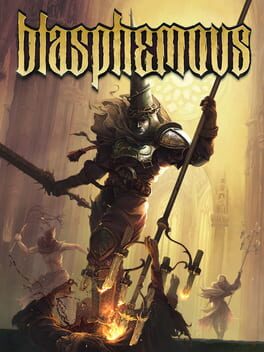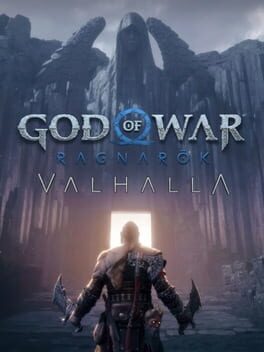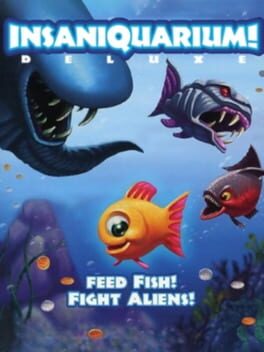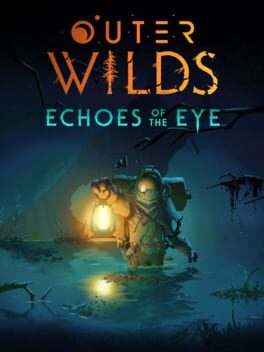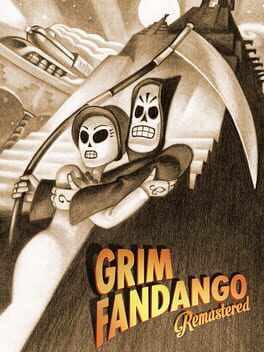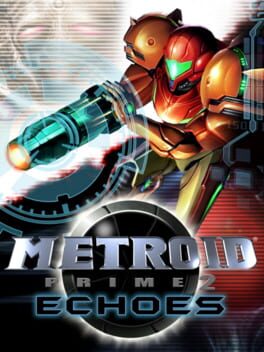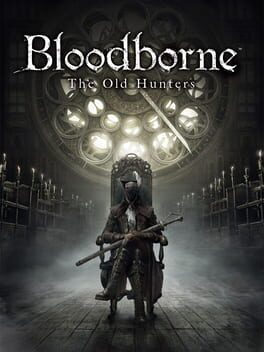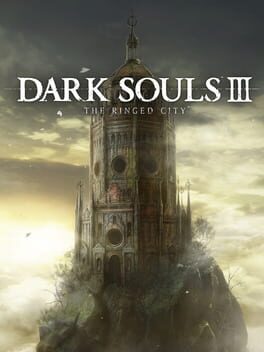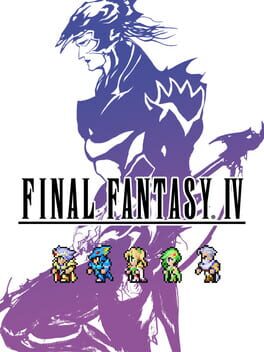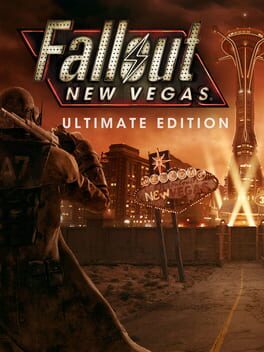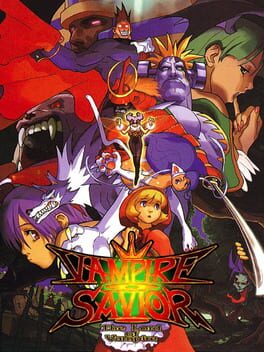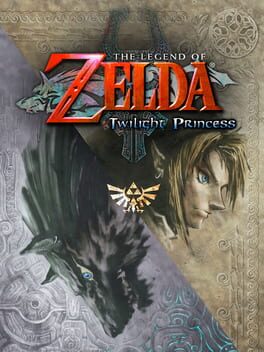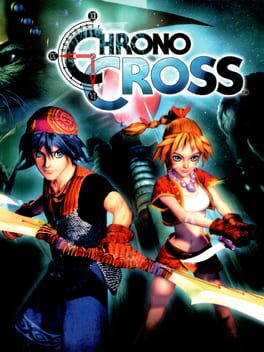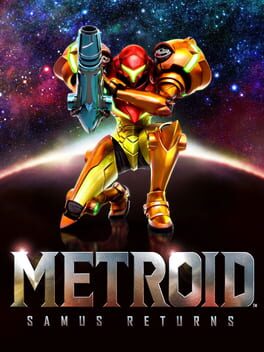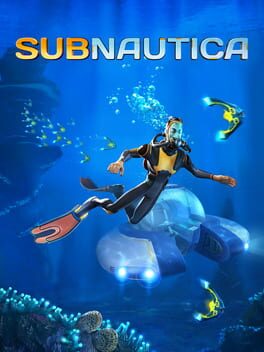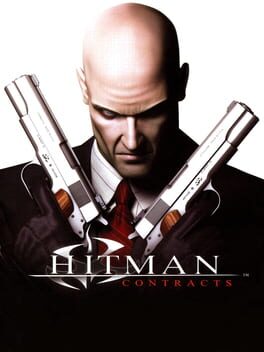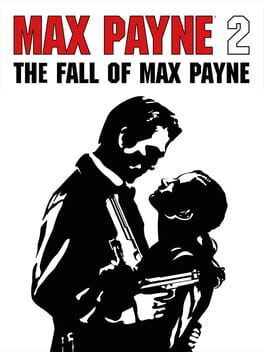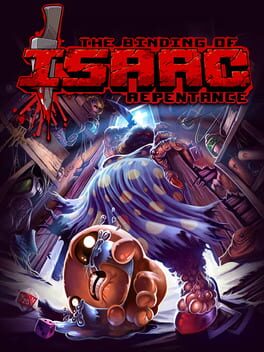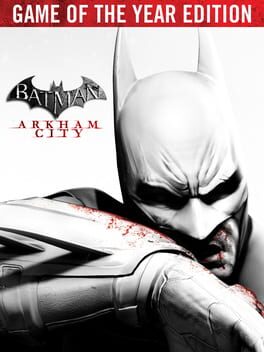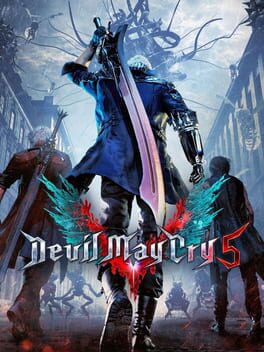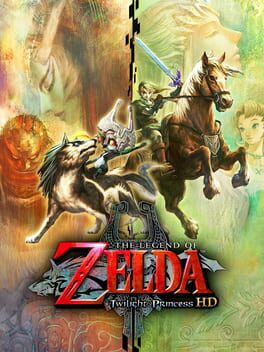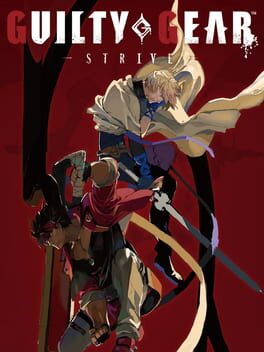dotsandloops
315 reviews liked by dotsandloops
Blasphemous
2019
Sights & Sounds
- The beautifully grotesque and overall creepy visual style were ultimately what drew me in, and I was in no way disappointed
- A lot of the basic enemies reminded me of the Castlevania PS and GBA games. The bosses, however, are very different. Whether it be the floating disembodied head of a burn victim or a gigantic blind baby, it's virtually guaranteed that you'll be surprised and just a little disgusted by what you see
- The music is what you'd expect given the 16-bit stylings and religious overtones. Hope you like synthesized organ pieces and somber hymns
Story & Vibes
- Given the title of the game, the heavy usage of religious themes is unsurprising
- In a nutshell, some sad little boy asked God to punish the world, and he was only too eager to comply. As a result, the world is pretty ♥♥♥♥♥♥ up. You're trying to fix things, but the church is pretty mad about your efforts
- The game is grim, serious, and violent, which blends well with the overall difficulty of the gameplay
Playability & Replayability
- Even by 2D Souls-like standards, this game is pretty tough. Be prepared to use every skill in your arsenal. Some of them make quick work of what would otherwise be difficult enemies
- The bosses will tax your endurance, reflexes, and visual acuity. Like most boss battles, attacks are fairly telegraphed, but you'll need to be quick and precise to endure some of the later battles
- Honestly not feeling a replay. I never hit a point in this game where I felt like I mastered its mechanics. It's not that they're overly complex or difficult to understand, but the tolerance for faults in execution is so low that you're always on your toes
Overall Impressions & Performance
- It was an excellent experience on the Steam Deck, and I found the d-pad to be more useful than the analog stick for this game
- One of the better games in this genre. I think I'd still rank Grime a little higher due to superior platforming. The bosses in Blasphemous are better designed, though
Final Verdict
- 8.5/10. It's worth it at full price, but it winds up bundled so often that you'll likely find it cheap somewhere. All in all, if you like gory, difficult platformers, buy with confidence
- The beautifully grotesque and overall creepy visual style were ultimately what drew me in, and I was in no way disappointed
- A lot of the basic enemies reminded me of the Castlevania PS and GBA games. The bosses, however, are very different. Whether it be the floating disembodied head of a burn victim or a gigantic blind baby, it's virtually guaranteed that you'll be surprised and just a little disgusted by what you see
- The music is what you'd expect given the 16-bit stylings and religious overtones. Hope you like synthesized organ pieces and somber hymns
Story & Vibes
- Given the title of the game, the heavy usage of religious themes is unsurprising
- In a nutshell, some sad little boy asked God to punish the world, and he was only too eager to comply. As a result, the world is pretty ♥♥♥♥♥♥ up. You're trying to fix things, but the church is pretty mad about your efforts
- The game is grim, serious, and violent, which blends well with the overall difficulty of the gameplay
Playability & Replayability
- Even by 2D Souls-like standards, this game is pretty tough. Be prepared to use every skill in your arsenal. Some of them make quick work of what would otherwise be difficult enemies
- The bosses will tax your endurance, reflexes, and visual acuity. Like most boss battles, attacks are fairly telegraphed, but you'll need to be quick and precise to endure some of the later battles
- Honestly not feeling a replay. I never hit a point in this game where I felt like I mastered its mechanics. It's not that they're overly complex or difficult to understand, but the tolerance for faults in execution is so low that you're always on your toes
Overall Impressions & Performance
- It was an excellent experience on the Steam Deck, and I found the d-pad to be more useful than the analog stick for this game
- One of the better games in this genre. I think I'd still rank Grime a little higher due to superior platforming. The bosses in Blasphemous are better designed, though
Final Verdict
- 8.5/10. It's worth it at full price, but it winds up bundled so often that you'll likely find it cheap somewhere. All in all, if you like gory, difficult platformers, buy with confidence
Elden Ring
2022
When I saw that it would be open world I was worried seeing the things that are made by companies like EA and Ubisoft, but this game has a reason to be open world. Exploring and getting lost is great.
The game allows you to headbutt the boss or say "I can't do it now, I'll be back later".
Amazing from start to finish.
The game allows you to headbutt the boss or say "I can't do it now, I'll be back later".
Amazing from start to finish.
CHAPTER 1: I LIKE RETURNAL BUT PLEASE PLAYSTATION STUDIOS YOU DON'T HAVE TO SLAP A ROGUELIKE/LITE INTO EVERY IP YOU HAVE
I hold the Norse God of War games in a very high regard, they are among my favorite games ever, and I still think they are some of the best of PlayStation Studios. To the point that for a while, I made it my mission to talk nonstop to my friends about why I found these games to be so good, specially after I first played through 2018 back in early 2019.
However, because my gaming plans are a mess, I took more than I expected to actually get into this DLC, but after watching the high praise it got, I went into it with huge expectations.
Now that I'm here after beating it, I feel in the awkward situation of having to complain about a game with mid gameplay with a wonderful story once again (specially after having done so recently with Alan Wake). But I just don't feel like these games were made to be Roguelites, in a way I have to complain about Returnal's success because it gave PS Studios the idea that they could slap Roguelikes into their some of their IPs as it also happened to The Last of Us Part II earlier this year.
By this, I mean that the idea of implementing the quirks of the genre into God of War meant that the best way they could do it was by removing all of Kratos' rune attacks and gearset perks you get throughout the main story and then offer them back as equipment for your runs, with pretty much no changes whatsoever. While at the same time, hitting the player with the realization that they are going to have to grind for stats by doing multiple runs because chances are (specially if you are playing on higher difficulties) that you will get statchecked by enemies that take too long to die and hit too hard because I guess they looked at their gear system and went "ah yeah, this is what people liked the most about these games".
By this, I don't mean that you can't get some cool perks nearing the final boss of a run, but more often than not, the effects won't just be as interesting as some you could get in other games of the genre, it's weird because here it just feels like they crafted the safest Roguelite known to man and that's saying a lot. But what do I know, at the end of the day, a lot of this could come from personal bias as well, since this isn't one of my favorite genres, aside from a couple of exceptions I can count with one hand.
Like I don't want to sound rude, specially after they put out this DLC for free in the most absolute gigachad move ever, God bless you Sony Santa Monica, but despite that, there is still something that you have to pay for while playing this DLC, which is time, and while you might have a better experience than I had with it, it still is as valuable as money itself.
CHAPTER 2: KRATOS FINALLY WENT TO THERAPY
With that out of the way, I can safely say that a big saving grace of the DLC was the storytelling, there will be some mild to heavy spoilers, as I'll try to keep it brief, so beware.
Once again I found myself immersed in the world and the emotional struggle of Kratos as he and Mimir have some of the most down to earth type of conversations I've seen in the duology, their dynamic is just stellar.
As Helios showed up on the first time, I started getting a bit worried as Kratos' behavior started showing some aspects of his old self from the Greek series, his first reaction was to almost draw the Blades of Chaos, and thinking just in the goal to be reached, he almost burnt Mimir into a crisp thinking that he had just swapped places with his former enemy. For a moment, I genuinely thought that just because he was dealing with an Olympian again, after all he had not changed at all, his old self was just dormant.
At this point the plot twist reveals itself, Tyr, the actual god this time, was the one who invited both to attend Valhalla, to what purpose? Therapy! I think I speak for many people who have gone through this franchise that Kratos is someone that genuinely needed it, specially with how the character was portrayed in this duology, with how clearly he had been repressing his feelings throughout the years, specially in front of Atreus.Tyr, serving as a fantastic therapist, understands that the best way of helping your patient, is by beating the shit out of them in a fantastic boss fight that carries so much of the DLC for me... wait no, scratch that, that doesn't sound good...
Tyr, serving as a fantastic therapist, understands that the best way of helping HIS patient is by helping him come to terms with who he was to accept just about what the rest of his life is going to be, after all, you can't blame Kratos for not feeling appropriate for the role, but at the same time, just like everyone around him, you know he is the right guy to be the new God of War of the Nine Realms.
In the end, what Kratos needed was not to forgive himself, but instead to realize that he was just not that monster anymore, even if Athena was right, and he will always be one, the point is that at this point, he has clearly learned to tame it, and will actually be willing to listen to those around him. And I support anyone who has that type of mental health realization.
I hold the Norse God of War games in a very high regard, they are among my favorite games ever, and I still think they are some of the best of PlayStation Studios. To the point that for a while, I made it my mission to talk nonstop to my friends about why I found these games to be so good, specially after I first played through 2018 back in early 2019.
However, because my gaming plans are a mess, I took more than I expected to actually get into this DLC, but after watching the high praise it got, I went into it with huge expectations.
Now that I'm here after beating it, I feel in the awkward situation of having to complain about a game with mid gameplay with a wonderful story once again (specially after having done so recently with Alan Wake). But I just don't feel like these games were made to be Roguelites, in a way I have to complain about Returnal's success because it gave PS Studios the idea that they could slap Roguelikes into their some of their IPs as it also happened to The Last of Us Part II earlier this year.
By this, I mean that the idea of implementing the quirks of the genre into God of War meant that the best way they could do it was by removing all of Kratos' rune attacks and gearset perks you get throughout the main story and then offer them back as equipment for your runs, with pretty much no changes whatsoever. While at the same time, hitting the player with the realization that they are going to have to grind for stats by doing multiple runs because chances are (specially if you are playing on higher difficulties) that you will get statchecked by enemies that take too long to die and hit too hard because I guess they looked at their gear system and went "ah yeah, this is what people liked the most about these games".
By this, I don't mean that you can't get some cool perks nearing the final boss of a run, but more often than not, the effects won't just be as interesting as some you could get in other games of the genre, it's weird because here it just feels like they crafted the safest Roguelite known to man and that's saying a lot. But what do I know, at the end of the day, a lot of this could come from personal bias as well, since this isn't one of my favorite genres, aside from a couple of exceptions I can count with one hand.
Like I don't want to sound rude, specially after they put out this DLC for free in the most absolute gigachad move ever, God bless you Sony Santa Monica, but despite that, there is still something that you have to pay for while playing this DLC, which is time, and while you might have a better experience than I had with it, it still is as valuable as money itself.
CHAPTER 2: KRATOS FINALLY WENT TO THERAPY
With that out of the way, I can safely say that a big saving grace of the DLC was the storytelling, there will be some mild to heavy spoilers, as I'll try to keep it brief, so beware.
Once again I found myself immersed in the world and the emotional struggle of Kratos as he and Mimir have some of the most down to earth type of conversations I've seen in the duology, their dynamic is just stellar.
As Helios showed up on the first time, I started getting a bit worried as Kratos' behavior started showing some aspects of his old self from the Greek series, his first reaction was to almost draw the Blades of Chaos, and thinking just in the goal to be reached, he almost burnt Mimir into a crisp thinking that he had just swapped places with his former enemy. For a moment, I genuinely thought that just because he was dealing with an Olympian again, after all he had not changed at all, his old self was just dormant.
At this point the plot twist reveals itself, Tyr, the actual god this time, was the one who invited both to attend Valhalla, to what purpose? Therapy! I think I speak for many people who have gone through this franchise that Kratos is someone that genuinely needed it, specially with how the character was portrayed in this duology, with how clearly he had been repressing his feelings throughout the years, specially in front of Atreus.
Tyr, serving as a fantastic therapist, understands that the best way of helping HIS patient is by helping him come to terms with who he was to accept just about what the rest of his life is going to be, after all, you can't blame Kratos for not feeling appropriate for the role, but at the same time, just like everyone around him, you know he is the right guy to be the new God of War of the Nine Realms.
In the end, what Kratos needed was not to forgive himself, but instead to realize that he was just not that monster anymore, even if Athena was right, and he will always be one, the point is that at this point, he has clearly learned to tame it, and will actually be willing to listen to those around him. And I support anyone who has that type of mental health realization.
Halo 3
2007
*Played as part of the Master Chief Collection
A bombastic conclusion to the original trilogy that feels truly satisfying. The story is a little worse than the second, and we lose those gorgeous pre-rendered cutscenes, but the game makes up for it with explosive aplomb and non-stop action. It's a fun ride to be on, and I'm glad I took the journey.
Now to dive into the remainder of the MCC and Infinite and see if the continuation of the franchise was really worth it after this ending.
A bombastic conclusion to the original trilogy that feels truly satisfying. The story is a little worse than the second, and we lose those gorgeous pre-rendered cutscenes, but the game makes up for it with explosive aplomb and non-stop action. It's a fun ride to be on, and I'm glad I took the journey.
Now to dive into the remainder of the MCC and Infinite and see if the continuation of the franchise was really worth it after this ending.
Hotline Miami
2012
I played this for the first time around a year ago during the final days of a period where I was intensely overworked for weeks straight. I had entered into some kind of sleep deprived rhythm, every day doing the exact same thing. One night I had a couple of hours of free time, saw Hotline Miami on sale for 99 cents, and four hours later I was a different person. There aren't even words that would explain how playing this felt after looking at spreadsheets for so long
Disney's Aladdin
1993
Nice little bite sized treat.
I'm on a mission to finish games that were too hard for me as a small childe.
Aladdin is a good ol' platformer with fluid animation and is (for the most part) faithful to the movie with regards to the movie and the soundtrack. It's not too challenging, it's short and very sweet.
They managed to capture the overall tone and vibe of the film very well and it's cool to hear the film's soundtrack with these SNES renditions.
I'm on a mission to finish games that were too hard for me as a small childe.
Aladdin is a good ol' platformer with fluid animation and is (for the most part) faithful to the movie with regards to the movie and the soundtrack. It's not too challenging, it's short and very sweet.
They managed to capture the overall tone and vibe of the film very well and it's cool to hear the film's soundtrack with these SNES renditions.
Ico
2001
I absolutely respect Ico for the influence it had on artistic adventure and exploration games along with Shadow of the Colossus. I really wanted to like it, as Shadow of the Colossus is one of my favorite games ever.
Unfortunately I hated Ico.
The loose controls, weird camera, and blurry, eye-straining graphics with way too much bloom gave me an actual headache. I just could not continue playing when the game had made me physically unwell in the first half hour.
Unfortunately I hated Ico.
The loose controls, weird camera, and blurry, eye-straining graphics with way too much bloom gave me an actual headache. I just could not continue playing when the game had made me physically unwell in the first half hour.
Insaniquarium Deluxe
2004
This review contains spoilers
Base game review
In my most recent review of the base game, I mentioned that discovery is the ethos of Outer Wilds. That ethos is successfully carried over to the Echoes of the Eye DLC, but not in a way that I expected. A key aspect of discovery is the ability to bravely face the unknown, and it’s that very aspect that Echoes of the Eye tests its players on. The farther you progress throughout the DLC, the more the game tests you in this regard, as you gradually learn more and more about the fate of the species that occupies The Stranger, and you eventually trespass through a world that’s hostile, oppressive, and foreboding in order to learn the truth about this mysterious and unheard-of alien race, as well as how they tie into the mystery regarding the Eye of the Universe.
The DLC feels very segmented from the core game, while at the same time managing to integrate itself naturally with the rest of Outer Wilds’ galaxy. Its explanation for why you wouldn’t have discovered it over the course of your original playthrough makes sense. The Stranger uses cloaking technology to make itself invisible so you likely would never find it over the course of your original journey. I like how they made getting to The Stranger a puzzle itself, further justifying why you wouldn’t have discovered it during your original run.
The Stranger is a very cool environment to explore. Making it a ring world like Halo was a great idea, and I love how its environment is more or less an extension to that of Timber Hearth’s, with its woodlands-based climate. Navigating The Stranger is quite fun. Regardless of your overall feelings towards the DLC, I feel like almost everyone can agree that water rafting to the different areas throughout the ship is really fun, especially with the accompanying music track that plays when the raft picks up speed.
The storytelling is done differently in the DLC. Since your translator doesn’t understand the language of the alien race aboard The Stranger, the story is told via the different projector reels that you find all throughout various abandoned and rotting buildings in the ship, and eventually, the dream world as well. Once you start to discover the various projection reels, the DLC gradually becomes more and more ominous as you learn additional details regarding the race that’s aboard the Stranger. I can’t tell you how uneasy I felt when I discovered the corpses of this race hidden away in one of their dream rooms. It was extremely unnerving the first time.
The contrast between dark and light is a key theme of the DLC, and like the base game, the DLC ties its key narrative theme with its gameplay very well. From the moment you board The Stranger, you discover how the ship’s systems generally operate via sources of light, making your flashlight a key tool throughout the entire DLC. This contrast is explored even further when you explore the dream world, which is enshrouded in pitch black darkness. Going from the bright and serene environment of The Stranger to the dark and oppressive atmosphere of the dream world is such an intense transition. The devs went above and beyond in making you feel like the dream world is a place you are not supposed to be in. Thanks to the incredible sound design as well as the usage of darkness to make it difficult to get a grasp on your surroundings, it feels like anything can come out of the dark to surprise and attack you at any moment. This is how Echoes of the Eye tests your ability to face the unknown in order to reach the truth.
I truly admire the lengths gone to in order to tie this narrative theme with the gameplay. The devs definitely accomplished what they set out to do with it, but at the same time, part of me feels like they did a little too good of a job. The dream world is so dark that it’s actually a bit of a nuisance trying to explore it. That in addition to its overwhelming atmosphere and the inability to fight back against enemies is the primary reason why unlike the base game, I wasn’t enthusiastic about exploring the dream world, and there were times where I actually had to sit down and force myself through it. I don’t know why I had such a reaction to the dream world when I’m normally an enjoyer and advocate for horror. It might be because of how much the environment is obfuscated in the dream world. In other horror games, I feel like I can at the very least prepare for threats by being aware of my surroundings, and I’m generally able to fight back against enemies, even in a limited capacity. In the dream world, my inability to always have a firm grasp of my surroundings due to the darkness or fight back at all against the patrolling enemies, as well as the oppressive soundscape, kept me constantly uncomfortable and on edge at all times. Even if the enemies are telegraphed by the lanterns they carry in the dark, they could still be hard to spot, and I would occasionally just turn around a corner and run into one of them with no way of knowing beforehand.
I definitely understand what the devs were trying to do by making the dream world dark and difficult to navigate. At the same time though, it made the dream world a pain to explore at times, as well as figure out what to do and where to go. When you discover the Forbidden Archives in each of the three key locations and you get the clues you need to figure out how to make navigating the dream world easier, it gets a lot better. You also learn additional details of the alien race that occupies The Stranger, including the contents of the projector reels that you discover on The Stranger that have burnt out slides, making them a particularly strong reward.
The conclusion of the DLC, which you reach by freeing the Prisoner after utilizing the techniques you learn in the Forbidden Archives, was rather satisfying. I really enjoyed the scene with the Prisoner where you exchange information with one another via his projection staff. I can’t imagine the complex emotions the Prisoner must’ve felt when he realized that his actions weren’t in vain, and in-fact, lead to core events that kick off the base game’s narrative. You can really grasp those feelings by listening to his pained, yet vindicated howl after the vision exchange. It’s a very tender and beautiful moment that only Outer Wilds is capable of. I was told to redo the base game’s ending again once I finished the DLC, and I’m glad I did, I’m actually a little ashamed that I didn’t think to do so after initially completing Echoes of the Eye. The addition of The Prisoner to the finale sequence was a welcome one, and it was very nice seeing him join up with the rest of the crew, introducing an additional race to the new universe that we birth together.
Echoes of the Eye is a different, yet excellent addition to Outer Wilds. However, I feel like I’d be lying if I said I completely enjoyed the experience. The dream world can be frustrating to navigate even when you do get used to the scary atmosphere and the enemies stop having that effect they once had on you, simply because of how difficult it is to see anything while you’re in it without leaving your artifact behind. Like most things in Outer Wilds though, it does become easier to navigate thanks to repetition. The DLC as a whole is still an excellent experience, and a worthwhile addition to the game. It’s not consistently fun, but at the same time it’s not trying to be. It challenges you to face the unknown, and I’m glad I braved that challenge.
In my most recent review of the base game, I mentioned that discovery is the ethos of Outer Wilds. That ethos is successfully carried over to the Echoes of the Eye DLC, but not in a way that I expected. A key aspect of discovery is the ability to bravely face the unknown, and it’s that very aspect that Echoes of the Eye tests its players on. The farther you progress throughout the DLC, the more the game tests you in this regard, as you gradually learn more and more about the fate of the species that occupies The Stranger, and you eventually trespass through a world that’s hostile, oppressive, and foreboding in order to learn the truth about this mysterious and unheard-of alien race, as well as how they tie into the mystery regarding the Eye of the Universe.
The DLC feels very segmented from the core game, while at the same time managing to integrate itself naturally with the rest of Outer Wilds’ galaxy. Its explanation for why you wouldn’t have discovered it over the course of your original playthrough makes sense. The Stranger uses cloaking technology to make itself invisible so you likely would never find it over the course of your original journey. I like how they made getting to The Stranger a puzzle itself, further justifying why you wouldn’t have discovered it during your original run.
The Stranger is a very cool environment to explore. Making it a ring world like Halo was a great idea, and I love how its environment is more or less an extension to that of Timber Hearth’s, with its woodlands-based climate. Navigating The Stranger is quite fun. Regardless of your overall feelings towards the DLC, I feel like almost everyone can agree that water rafting to the different areas throughout the ship is really fun, especially with the accompanying music track that plays when the raft picks up speed.
The storytelling is done differently in the DLC. Since your translator doesn’t understand the language of the alien race aboard The Stranger, the story is told via the different projector reels that you find all throughout various abandoned and rotting buildings in the ship, and eventually, the dream world as well. Once you start to discover the various projection reels, the DLC gradually becomes more and more ominous as you learn additional details regarding the race that’s aboard the Stranger. I can’t tell you how uneasy I felt when I discovered the corpses of this race hidden away in one of their dream rooms. It was extremely unnerving the first time.
The contrast between dark and light is a key theme of the DLC, and like the base game, the DLC ties its key narrative theme with its gameplay very well. From the moment you board The Stranger, you discover how the ship’s systems generally operate via sources of light, making your flashlight a key tool throughout the entire DLC. This contrast is explored even further when you explore the dream world, which is enshrouded in pitch black darkness. Going from the bright and serene environment of The Stranger to the dark and oppressive atmosphere of the dream world is such an intense transition. The devs went above and beyond in making you feel like the dream world is a place you are not supposed to be in. Thanks to the incredible sound design as well as the usage of darkness to make it difficult to get a grasp on your surroundings, it feels like anything can come out of the dark to surprise and attack you at any moment. This is how Echoes of the Eye tests your ability to face the unknown in order to reach the truth.
I truly admire the lengths gone to in order to tie this narrative theme with the gameplay. The devs definitely accomplished what they set out to do with it, but at the same time, part of me feels like they did a little too good of a job. The dream world is so dark that it’s actually a bit of a nuisance trying to explore it. That in addition to its overwhelming atmosphere and the inability to fight back against enemies is the primary reason why unlike the base game, I wasn’t enthusiastic about exploring the dream world, and there were times where I actually had to sit down and force myself through it. I don’t know why I had such a reaction to the dream world when I’m normally an enjoyer and advocate for horror. It might be because of how much the environment is obfuscated in the dream world. In other horror games, I feel like I can at the very least prepare for threats by being aware of my surroundings, and I’m generally able to fight back against enemies, even in a limited capacity. In the dream world, my inability to always have a firm grasp of my surroundings due to the darkness or fight back at all against the patrolling enemies, as well as the oppressive soundscape, kept me constantly uncomfortable and on edge at all times. Even if the enemies are telegraphed by the lanterns they carry in the dark, they could still be hard to spot, and I would occasionally just turn around a corner and run into one of them with no way of knowing beforehand.
I definitely understand what the devs were trying to do by making the dream world dark and difficult to navigate. At the same time though, it made the dream world a pain to explore at times, as well as figure out what to do and where to go. When you discover the Forbidden Archives in each of the three key locations and you get the clues you need to figure out how to make navigating the dream world easier, it gets a lot better. You also learn additional details of the alien race that occupies The Stranger, including the contents of the projector reels that you discover on The Stranger that have burnt out slides, making them a particularly strong reward.
The conclusion of the DLC, which you reach by freeing the Prisoner after utilizing the techniques you learn in the Forbidden Archives, was rather satisfying. I really enjoyed the scene with the Prisoner where you exchange information with one another via his projection staff. I can’t imagine the complex emotions the Prisoner must’ve felt when he realized that his actions weren’t in vain, and in-fact, lead to core events that kick off the base game’s narrative. You can really grasp those feelings by listening to his pained, yet vindicated howl after the vision exchange. It’s a very tender and beautiful moment that only Outer Wilds is capable of. I was told to redo the base game’s ending again once I finished the DLC, and I’m glad I did, I’m actually a little ashamed that I didn’t think to do so after initially completing Echoes of the Eye. The addition of The Prisoner to the finale sequence was a welcome one, and it was very nice seeing him join up with the rest of the crew, introducing an additional race to the new universe that we birth together.
Echoes of the Eye is a different, yet excellent addition to Outer Wilds. However, I feel like I’d be lying if I said I completely enjoyed the experience. The dream world can be frustrating to navigate even when you do get used to the scary atmosphere and the enemies stop having that effect they once had on you, simply because of how difficult it is to see anything while you’re in it without leaving your artifact behind. Like most things in Outer Wilds though, it does become easier to navigate thanks to repetition. The DLC as a whole is still an excellent experience, and a worthwhile addition to the game. It’s not consistently fun, but at the same time it’s not trying to be. It challenges you to face the unknown, and I’m glad I braved that challenge.
Sights & Sounds
- As far as remasters go, it seems difficult to work with assets from the blocky early 3D period of the late 90s. Regardless of your skills, you're starting with awkwardly shaped polygons and muddy JPEG backgrounds
- That is to say, this remaster of the LucasArts classic Grim Fandango is visually uneven. The updated textures on the 3D models look pretty nice, but the conversion to 16:9 has stretched the character models a little bit. I probably wouldn't have noticed were I not looking at direct comparisons, but they are noticeably squished. The backgrounds appear to be mostly unchanged, but the lighting and shadows have been heavily revamped. Most indoor parts of the game are far darker than they used to be if there isn't a light source nearby
- The voicework is as spectacular as ever. It was my favorite thing about the game when I played the original way back in the early 2000s, and it's still a collection of standout performances. Manny, Glottis, and Meche are all of course excellently voiced, but even the side characters are great. I still like to parrot the French accent of the roulette table's croupier
- Setting my nostalgia glasses aside, it's evident that the game still looks very dated, and even the remaster doesn't really do much to update it. Thankfully, the strong art direction and setting still look good after all this time. The Land of the Dead and all its Dia de los Muertos inspired populace look great, whether you're milling about your office or trying to hide from monsters at the bottom of the sea
- The jazzy soundtrack is also a highlight, and Year 2's music is particularly great. The less boisterous tracks sound like background music for The Maltese Falcon
Story & Vibes
- The narrative is extremely good; with all the time skips and varied settings you traverse, it actually feels like you're going on an adventure. The plot follows Manuel "Manny" Calavera, a travel agent in the Land of the Dead. In this version of the afterlife, the dead are required to embark on a treacherous journey before their soul can finally move on. The wicked may only get a walking cane to assist them, but the most righteous score a "double-N" ticket for the No. 9, a luxury train that allows them to skip the whole ordeal
- (Skip this bullet if you don't want spoilers for the set-up) Although Manny was formerly a consistent employee-of-the-month, he's recently been outshined by his colleague, Domino Hurley, who seems to be extremely shady and appears to have connections to the realm's seedy criminal underbelly. The plot kicks off after you find that Hector has stolen the ticket of Mercedes "Meche" Colomar, a virtuous soul who spent the majority of her life doing charity work for children. Meche sets off on her journey anyway, forcing Manny to try to track her down on a world-spanning adventure to ensure her path across the land of the dead is safe and successful. Along the way, you'll find yourself in the middle of a huge conspiracy, so you should probably see about tidying that up, too
- One of the highlights of the narrative has to be the variety in the settings you traverse. You'll guide Manny through mundane offices, the tops of tall skyscrapers, spider-infested woods, secret underground tunnels, and beatnick jazz clubs. And that's just the first half of the game
- All the while, you'll be accompanied by the friendly demon, Glottis. In a game full of comic relief, he's the comic relief-iest--a constant source of eye-rolling gags and physical comedy that will probably annoy you at first, but will eventually become endearing. As far as sidekicks go, he's one of the best. I'd place him just a spot below Disco Elysium's Kim Kitsuragi
- There's some great emotional range going on here. In spite of the ubiquity of death and its prominent place in the plot, the humor is constant and often very funny. Corny, but still capable of eliciting some chuckles. In other moments, the game is very contemplative and soulful. As you'd imagine, the fact that there's an afterlife gives you plenty of time to regret your former life's actions
Playability & Replayability
- Although LucasArts point-and-clicks had traditionally been fixed camera, front-on, 2D affairs, Grim Fandango was their first departure from that perspective. Unfortunately, expanding to fill a new dimension came with some growing pains, specifically in terms of how you navigate. Like early Resident Evil games, LucasArts opted for tank controls as your main mode of locomotion. These have always been annoying, and it wasn't any better in Grim Fandango. Luckily, the Remaster only features these as a settings menu option, but note that you'll need to endure them if you want to 100% the game. Turn them on before leaving your office at the beginning if you want to suffer for that unlock
- Due to playing so many point-and-clicks over the years, I have a high tolerance for unintuitive or seemingly random puzzle solutions. That said, Grim Fandango is obtuse enough in this regard to test a saint's patience. I was able to remember many of the more ridiculous solutions from the original, but I still had to consult a guide. The GameFAQs walkthrough I used was published in 1998, and part of me wonders if it's the same one I used back in middle school
- Retreading these puzzles has given me a bit of a new perspective: they're largely bad. The setting, art, and story of Grim Fandango may all be world-class, but the puzzles are nonsensical even by LucasArts standards. If you insist on beating this one blind, be prepared to not know what you're supposed to do roughly 95% of your playthrough
- If you can stomach the gameplay, this is definitely a game worth replaying. Maybe it's the nostalgia talking, but Grim Fandango's narrative, characters, and art design basically guarantee that this will be a game I come back to every now and then
Overall Impressions & Performance
- It's a classic, but not one that I would necessarily call "timeless". Game design has come a long, long, way since 1998
- I wouldn't be opposed to a full remake of this game (but keeping the original voicework) if such a thing were possible. Given Disney's track record of "vaulting" content that didn't sell well at release, I think this is the last official version of Grim Fandango we'll see, unfortunately
- After seeing that the remastered visuals weren't anything that would benefit from a larger screen, I wound up just playing this on the couch on the Steam Deck. It performed well, and the analog sticks made the tank controls a little more bearable
Final Verdict
- 8.5/10. Before playing the remaster, I was totally prepared to give this game something in the 9.5-10 range, but actually revisiting it has given me some pause. The story, art, and voice work are all still incredible and hold up, but I have less tolerance for the unintuitive puzzles than I used to. Some of them are actually pretty bad in retrospect. That said, this is absolutely a must-play for any point-and-click fan
Like writing reviews? Check out my free Steam game giveaway
- As far as remasters go, it seems difficult to work with assets from the blocky early 3D period of the late 90s. Regardless of your skills, you're starting with awkwardly shaped polygons and muddy JPEG backgrounds
- That is to say, this remaster of the LucasArts classic Grim Fandango is visually uneven. The updated textures on the 3D models look pretty nice, but the conversion to 16:9 has stretched the character models a little bit. I probably wouldn't have noticed were I not looking at direct comparisons, but they are noticeably squished. The backgrounds appear to be mostly unchanged, but the lighting and shadows have been heavily revamped. Most indoor parts of the game are far darker than they used to be if there isn't a light source nearby
- The voicework is as spectacular as ever. It was my favorite thing about the game when I played the original way back in the early 2000s, and it's still a collection of standout performances. Manny, Glottis, and Meche are all of course excellently voiced, but even the side characters are great. I still like to parrot the French accent of the roulette table's croupier
- Setting my nostalgia glasses aside, it's evident that the game still looks very dated, and even the remaster doesn't really do much to update it. Thankfully, the strong art direction and setting still look good after all this time. The Land of the Dead and all its Dia de los Muertos inspired populace look great, whether you're milling about your office or trying to hide from monsters at the bottom of the sea
- The jazzy soundtrack is also a highlight, and Year 2's music is particularly great. The less boisterous tracks sound like background music for The Maltese Falcon
Story & Vibes
- The narrative is extremely good; with all the time skips and varied settings you traverse, it actually feels like you're going on an adventure. The plot follows Manuel "Manny" Calavera, a travel agent in the Land of the Dead. In this version of the afterlife, the dead are required to embark on a treacherous journey before their soul can finally move on. The wicked may only get a walking cane to assist them, but the most righteous score a "double-N" ticket for the No. 9, a luxury train that allows them to skip the whole ordeal
- (Skip this bullet if you don't want spoilers for the set-up) Although Manny was formerly a consistent employee-of-the-month, he's recently been outshined by his colleague, Domino Hurley, who seems to be extremely shady and appears to have connections to the realm's seedy criminal underbelly. The plot kicks off after you find that Hector has stolen the ticket of Mercedes "Meche" Colomar, a virtuous soul who spent the majority of her life doing charity work for children. Meche sets off on her journey anyway, forcing Manny to try to track her down on a world-spanning adventure to ensure her path across the land of the dead is safe and successful. Along the way, you'll find yourself in the middle of a huge conspiracy, so you should probably see about tidying that up, too
- One of the highlights of the narrative has to be the variety in the settings you traverse. You'll guide Manny through mundane offices, the tops of tall skyscrapers, spider-infested woods, secret underground tunnels, and beatnick jazz clubs. And that's just the first half of the game
- All the while, you'll be accompanied by the friendly demon, Glottis. In a game full of comic relief, he's the comic relief-iest--a constant source of eye-rolling gags and physical comedy that will probably annoy you at first, but will eventually become endearing. As far as sidekicks go, he's one of the best. I'd place him just a spot below Disco Elysium's Kim Kitsuragi
- There's some great emotional range going on here. In spite of the ubiquity of death and its prominent place in the plot, the humor is constant and often very funny. Corny, but still capable of eliciting some chuckles. In other moments, the game is very contemplative and soulful. As you'd imagine, the fact that there's an afterlife gives you plenty of time to regret your former life's actions
Playability & Replayability
- Although LucasArts point-and-clicks had traditionally been fixed camera, front-on, 2D affairs, Grim Fandango was their first departure from that perspective. Unfortunately, expanding to fill a new dimension came with some growing pains, specifically in terms of how you navigate. Like early Resident Evil games, LucasArts opted for tank controls as your main mode of locomotion. These have always been annoying, and it wasn't any better in Grim Fandango. Luckily, the Remaster only features these as a settings menu option, but note that you'll need to endure them if you want to 100% the game. Turn them on before leaving your office at the beginning if you want to suffer for that unlock
- Due to playing so many point-and-clicks over the years, I have a high tolerance for unintuitive or seemingly random puzzle solutions. That said, Grim Fandango is obtuse enough in this regard to test a saint's patience. I was able to remember many of the more ridiculous solutions from the original, but I still had to consult a guide. The GameFAQs walkthrough I used was published in 1998, and part of me wonders if it's the same one I used back in middle school
- Retreading these puzzles has given me a bit of a new perspective: they're largely bad. The setting, art, and story of Grim Fandango may all be world-class, but the puzzles are nonsensical even by LucasArts standards. If you insist on beating this one blind, be prepared to not know what you're supposed to do roughly 95% of your playthrough
- If you can stomach the gameplay, this is definitely a game worth replaying. Maybe it's the nostalgia talking, but Grim Fandango's narrative, characters, and art design basically guarantee that this will be a game I come back to every now and then
Overall Impressions & Performance
- It's a classic, but not one that I would necessarily call "timeless". Game design has come a long, long, way since 1998
- I wouldn't be opposed to a full remake of this game (but keeping the original voicework) if such a thing were possible. Given Disney's track record of "vaulting" content that didn't sell well at release, I think this is the last official version of Grim Fandango we'll see, unfortunately
- After seeing that the remastered visuals weren't anything that would benefit from a larger screen, I wound up just playing this on the couch on the Steam Deck. It performed well, and the analog sticks made the tank controls a little more bearable
Final Verdict
- 8.5/10. Before playing the remaster, I was totally prepared to give this game something in the 9.5-10 range, but actually revisiting it has given me some pause. The story, art, and voice work are all still incredible and hold up, but I have less tolerance for the unintuitive puzzles than I used to. Some of them are actually pretty bad in retrospect. That said, this is absolutely a must-play for any point-and-click fan
Like writing reviews? Check out my free Steam game giveaway
12 lists liked by dotsandloops
by Cyuu_ |
14 Games
by NOWITSREYNTIME17 |
8 Games
by HunterMask |
9 Games
by HunterMask |
13 Games
by theia |
10 Games
by woodoo |
5 Games
by woodoo |
6 Games
by NovaNiles |
15 Games
by Phantasm |
46 Games
